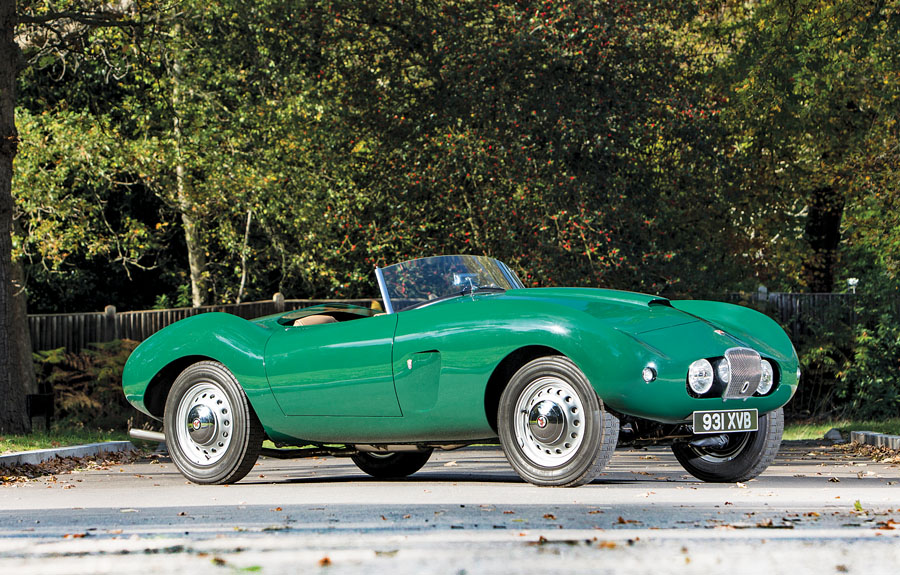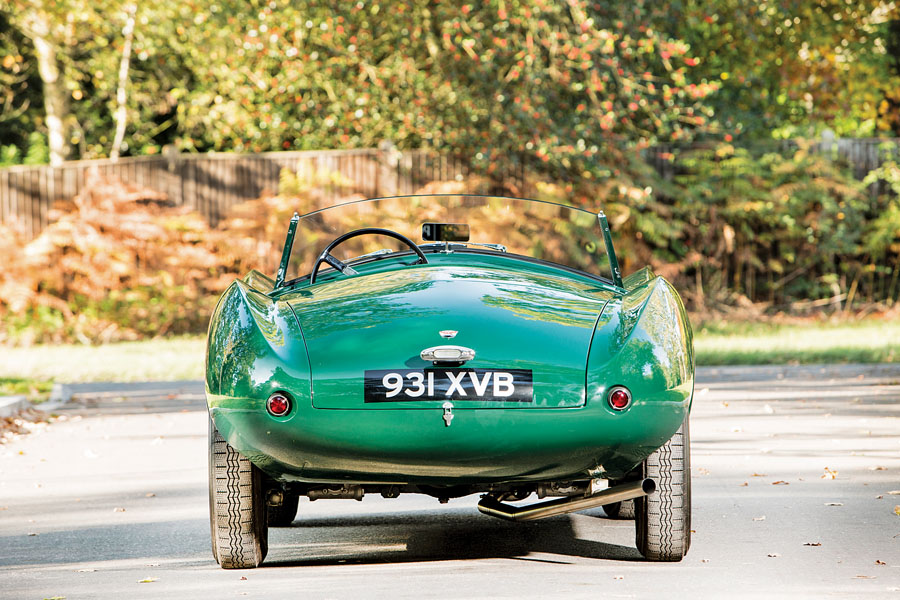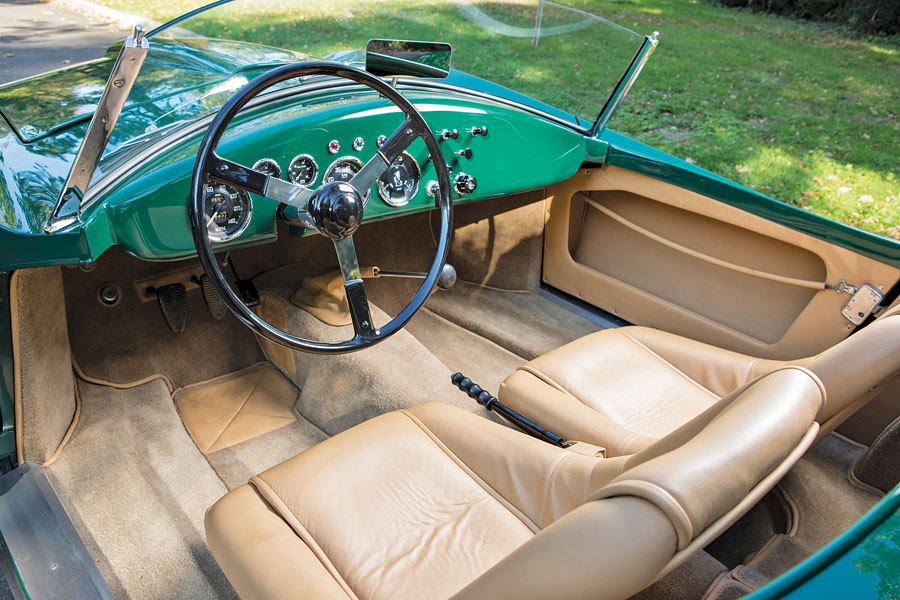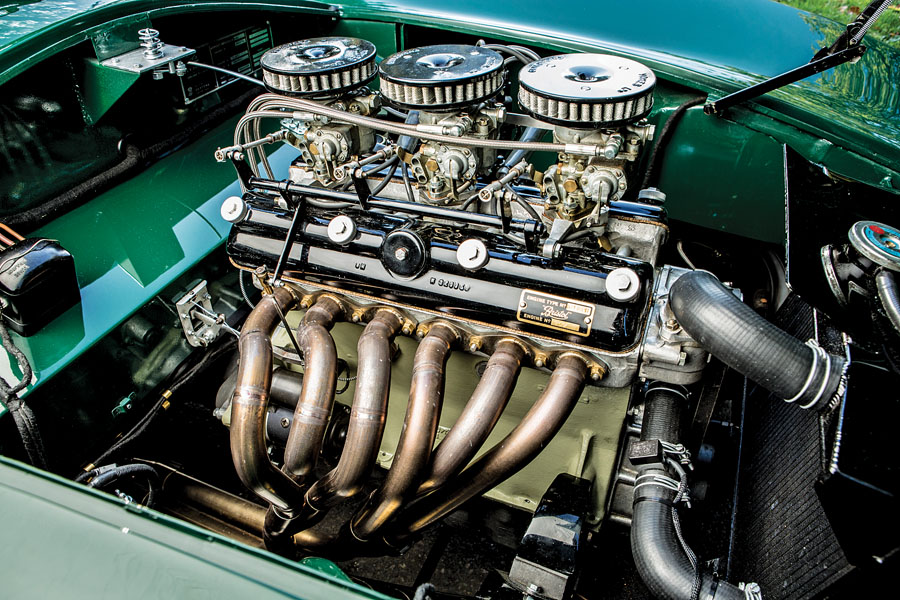SCM Analysis
Detailing
| Vehicle: | 1954 Arnolt-Bristol Bolide |
| Years Produced: | 1953–59 |
| Number Produced: | 142 |
| Original List Price: | $4,245 (Bolide) |
| SCM Valuation: | $425,500 |
| Chassis Number Location: | Plate riveted to left of firewall |
| Engine Number Location: | Stamped in left front of cylinder head; on plate on right rocker cover |
| Club Info: | Bristol Owners’ Club |
| Website: | https://boc.net/s/ |
| Alternatives: | 1954 Arnolt MG TD, 1957 Jaguar XK 150 by Bertone, 1953–55 Alfa Romeo BAT |
| Investment Grade: | B |
This car, Lot 16, sold for $337,322, including buyer’s premium, at Bonhams’ New Bond Street sale in London, U.K., on December 1, 2018.
The Arnolt-Bristol wasn’t quite Stanley’s “next” venture. Before that came a small batch of Arnolt-Astons based on DB2/4s, although Aston Martin stamped out further sales after the first three were built.
Then there was the Arnolt Bentley, built by Bertone on a 1953 R-type Continental chassis for Arnolt’s personal use. It looked like a larger version of the Arnolt-MG, as it was also styled by Michelotti.
Lots of choices for lots of money
Arnolt-Bristols, built on a shortened 404 chassis with 403 running gear, were available in four body styles:
- The Competition, which was a stripped road racer.
- The Bolide, which was slightly better appointed — with a proper windshield.
- The Deluxe, which got side windows, convertible top, outside door handles, instruments mounted in a housing in front of the driver and a glovebox in the dash.
- The Coupe, with pop-up headlights. Six were built; Hollywood star Lee Marvin owned one of them.
Prices as per a 1956 factory letter were $3,995 for the competition model, $4,245 for the Bolide, $4,995 for the Deluxe ($1,800 more than a Corvette) and $5,995 for the coupe.
Arnolt’s advertising of the time — “Always ready for action” — boasted that the car could go from the supermarket to the start line without even a plug change. Ads also said the cars had finished 1st, 2nd and 4th in the 2-liter class for the second year in a row at the 1956 12 Hours of Sebring, and crowbarred in a sneaky plug for Sandoz, which made the dye for the sophisticated-looking model’s bright yellow sweater.
Despite the racing successes, the cars did not sell well, and the last, fitted with four headlights, wasn’t sold until 1968. A total of 142 were built, although 12 were destroyed in a warehouse fire. About 85 are thought to still exist.
No history and lots of new bits
Our subject car was presented as an effectively new car. There wasn’t any vintage history offered with chassis 404X3065.
When the car’s known history began, it had a small-block Chevy, as was the fate of several other Bolides. Our subject car also sported flared arches under bright red paint, which covered wide chrome wheels with raised-white-letter BFGs. The nose had been rather chopped about, with altered headlight mountings.
According to the Bristol Cars owners and enthusiasts’ forum, in 2010 our subject car was in the hands of Jim Dahl in California. Later it was acquired by Bristol, presumably to restore for its own collection, but the company’s fortunes have always fluctuated, and in 2014 it was sold on.
Much of the originality is gone
Starting in 2016, the car was restored at Adam Redding Classic Cars in Buckinghamshire, with all-new nose and front wings in steel by Gary Pitney at GP Panelcraft. It needed new floors (the tunnel is original), dash panel and a new honeycomb-aluminum bulkhead/toeboard.
Most of the rear bodywork is original, as are the doors, sills and aluminum trunk lid. Traces of the original paint were found, and the car was repainted to match.
The grille is a replica, bought from a man who had 10, as he planned to build a series of re-creations. The NOS Bristol hubcaps were found on eBay for £26 a pop, although the replica enamel badges for their centers cost rather more.
The front brakes are from a Jaguar XK 120, using Bristol’s own drums. Incredibly, new drums were found in Bristol’s stores for £17.50 each — the price hadn’t been updated for decades, according to John Simister’s article in Octane (February 2018) that detailed the car’s restoration.
The engine is the correct B2 three-carb type, although it is not original to the car. It was sourced from the small ads, having been in a Cooper-Bristol GP car, rebuilt by Bristol veteran Mike Robinson to correct 130-bhp spec. The car wears a beautifully crafted six-branch manifold that’s rather more freeform than the straight-rigged original pair of triples.
The car also has an aluminum foam-filled competition fuel tank (with original filler cap welded over the FIA-approved inner cap), an aluminum radiator and an oil cooler, so it’s suitable for historic events, including the Mille Miglia — for which it is eligible.
Prior to the sale it was advertised by Abbeyfield Sports & Classics Limited of Chertsey, west of London.
An uphill battle against Brexit
This was one of only 11 sellers out of 29 cars offered at this auction (there’s a physical limit of about 35 cars inside Bonhams’ flagship Deco headquarters in Mayfair, and getting them in and out during the West End shopping season is a logistical headache).
What cars did sell at New Bond Street went for good money, and many of those that did not sell were frankly over-estimated in today’s market — although that’s not Bonhams’ fault. The catalog was finalized several weeks before the sale, during which time all U.K. markets took another downturn amid the disintegrating Brexit negotiations.
Therefore, the lower estimate, close to where the reserve usually lies, probably would have been nearer the £230k ($295k) top bid that was accepted had the catalog been produced the day before the sale, rather than the published £250k ($320k) decided several weeks earlier.
It’s worth bearing in mind that £250k at 2016 (pre-Brexit vote) prices would have been $360k, not $320k.
Fairly sold at this price
This car sold for the right money because:
- They’re rare, and don’t come to market often.
- It is potentially Mille Miglia eligible, although the event is tougher to get into every year.
- It was cheaper than the Zoute car (s/n 3033, see Comps) because, while that was rusty and flaking before restoration, it was very original rather than having been chopped about.
Everyone should have come away happy from this deal; it’s likely that nobody got burnt, and the buyer now has — at a reasonable price — a rare sports car with super handling that is eligible for all the best events. ♦
(Introductory description courtesy of Bonhams.)



